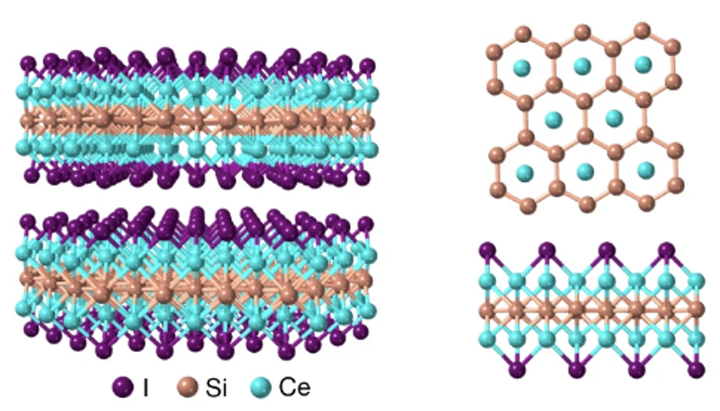Two-dimensional heavy fermions in the van der Waals metal CeSiI

Abstract
Heavy-fermion metals are prototype systems for observing emergent quantum phases driven by electronic interactions1–6. A long-standing aspiration is the dimensional reduction of these materials to exert control over their quantum phases7–11, which remains a significant challenge because traditional intermetallic heavy-fermion compounds have three-dimensional atomic and electronic structures. Here we report comprehensive thermodynamic and spectroscopic evidence of an antiferromagnetically ordered heavy-fermion ground state in CeSiI, an intermetallic comprising two-dimensional (2D) metallic sheets held together by weak interlayer van der Waals (vdW) interactions. Owing to its vdW nature, CeSiI has a quasi-2D electronic structure, and we can control its physical dimension through exfoliation. The emergence of coherent hybridization of f and conduction electrons at low temperature is supported by the temperature evolution of angle-resolved photoemission and scanning tunnelling spectra near the Fermi level and by heat capacity measurements. Electrical transport measurements on few-layer flakes reveal heavy-fermion behaviour and magnetic order down to the ultra-thin regime. Our work establishes CeSiI and related materials as a unique platform for studying dimensionally confined heavy fermions in bulk crystals and employing 2D device fabrication techniques and vdW heterostructures12 to manipulate the interplay between Kondo screening, magnetic order and proximity effects.